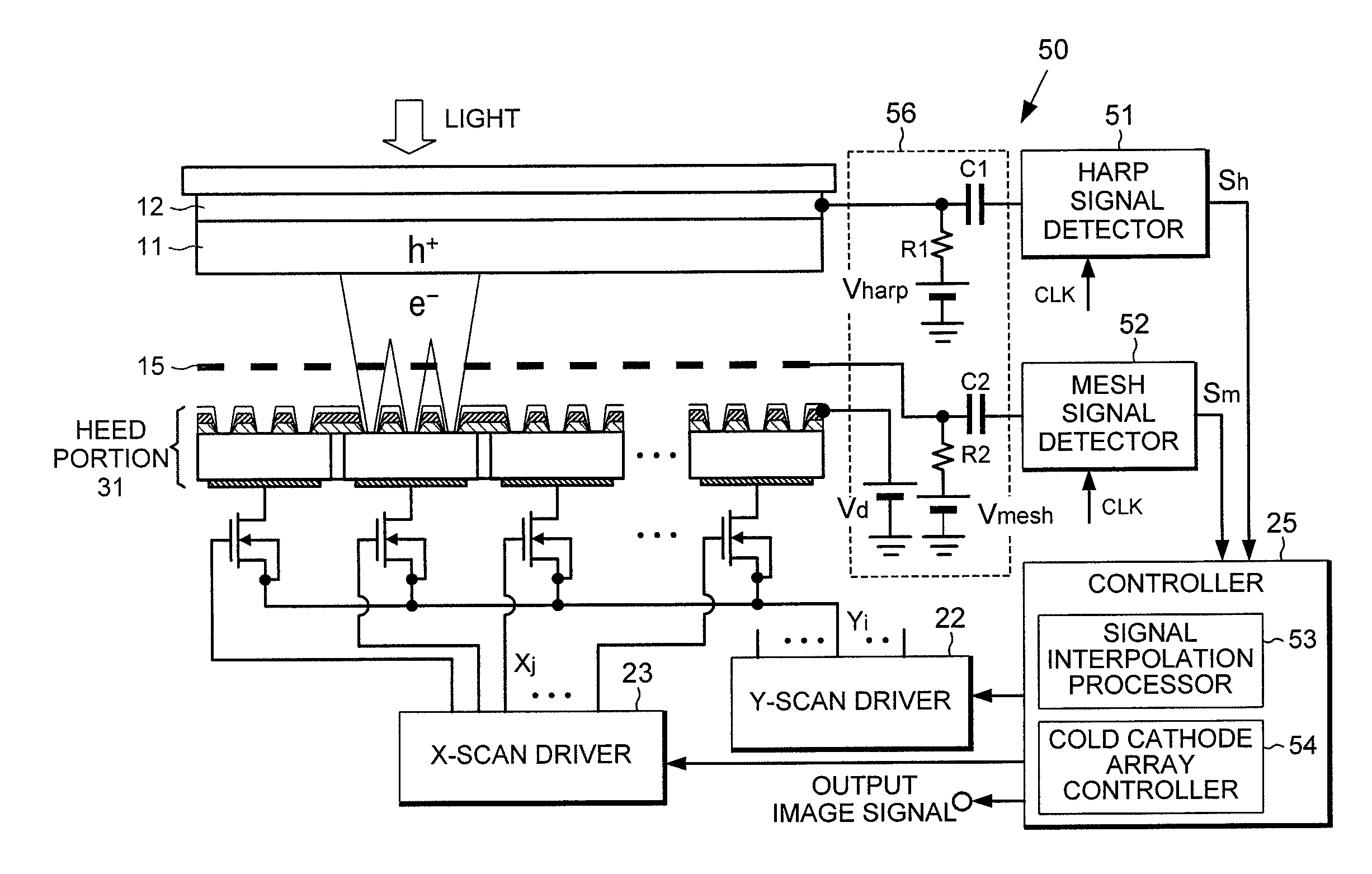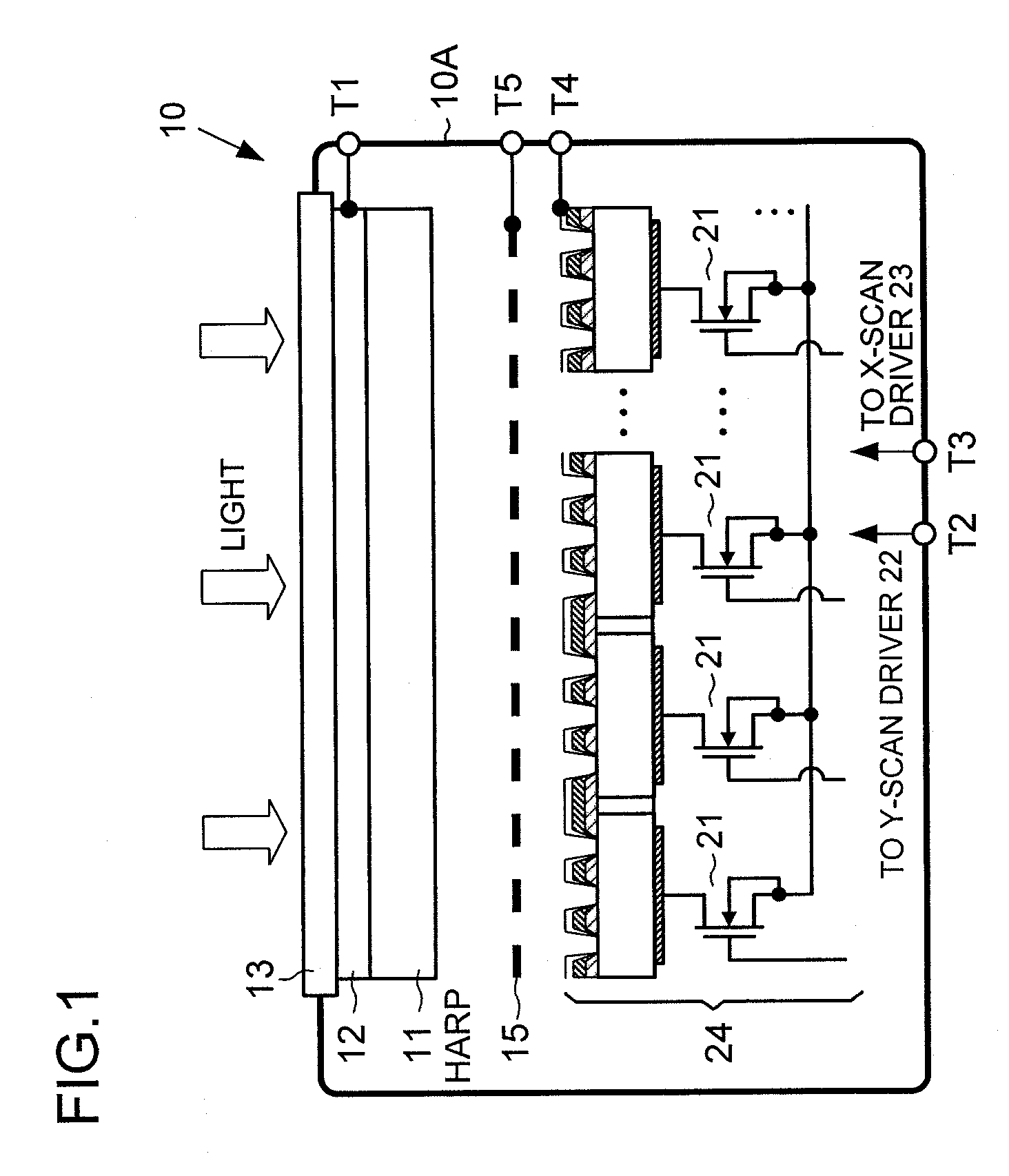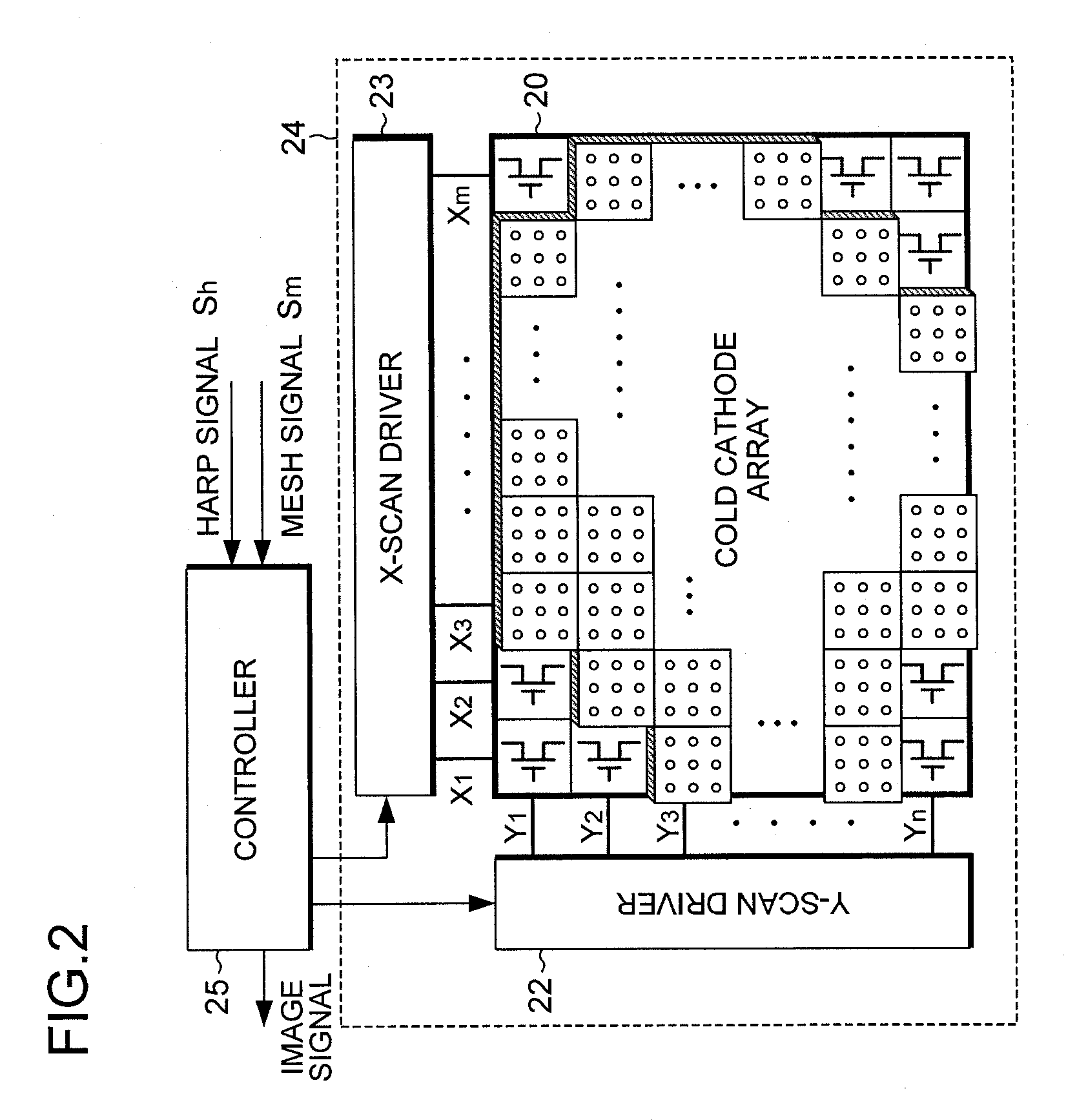Image sensing device
a sensing device and image technology, applied in the field of image sensing devices, can solve the problems of signal saturation, defective pixel always becomes a black dot, and the detected signal is saturated, and achieve the effect of correct detection of defective pixel
- Summary
- Abstract
- Description
- Claims
- Application Information
AI Technical Summary
Benefits of technology
Problems solved by technology
Method used
Image
Examples
Embodiment Construction
[0022]The embodiments of the present invention will now be described with reference to the drawings.
[0023]FIG. 1 is a cross-sectional view schematically illustrating a configuration of an HEED cold cathode HARP image sensor 10. The HEED cold cathode HARP image sensor 10, which will hereinafter also be referred to as a “cold cathode image sensor” for short, is an image sensor which combines a High-efficiency Electron Emission Device (HEED) with a High-gain Avalanche Rushing amorphous Photoconductor (HARP). In more detail, the cold cathode image sensor 10 includes an HARP photoelectric conversion film 11, an HEED cold cathode array chip 24, and a mesh electrode (intermediate electrode) 15 which is disposed between the HARP photoelectric conversion film 11 and the HEED cold cathode array 20. As described later, the HEED cold cathode array chip 24 integrally includes an active-matrix HEED cold cathode array 20, which will hereinafter be referred to as an “HEED cold cathode array” for sh...
PUM
 Login to View More
Login to View More Abstract
Description
Claims
Application Information
 Login to View More
Login to View More - R&D
- Intellectual Property
- Life Sciences
- Materials
- Tech Scout
- Unparalleled Data Quality
- Higher Quality Content
- 60% Fewer Hallucinations
Browse by: Latest US Patents, China's latest patents, Technical Efficacy Thesaurus, Application Domain, Technology Topic, Popular Technical Reports.
© 2025 PatSnap. All rights reserved.Legal|Privacy policy|Modern Slavery Act Transparency Statement|Sitemap|About US| Contact US: help@patsnap.com



